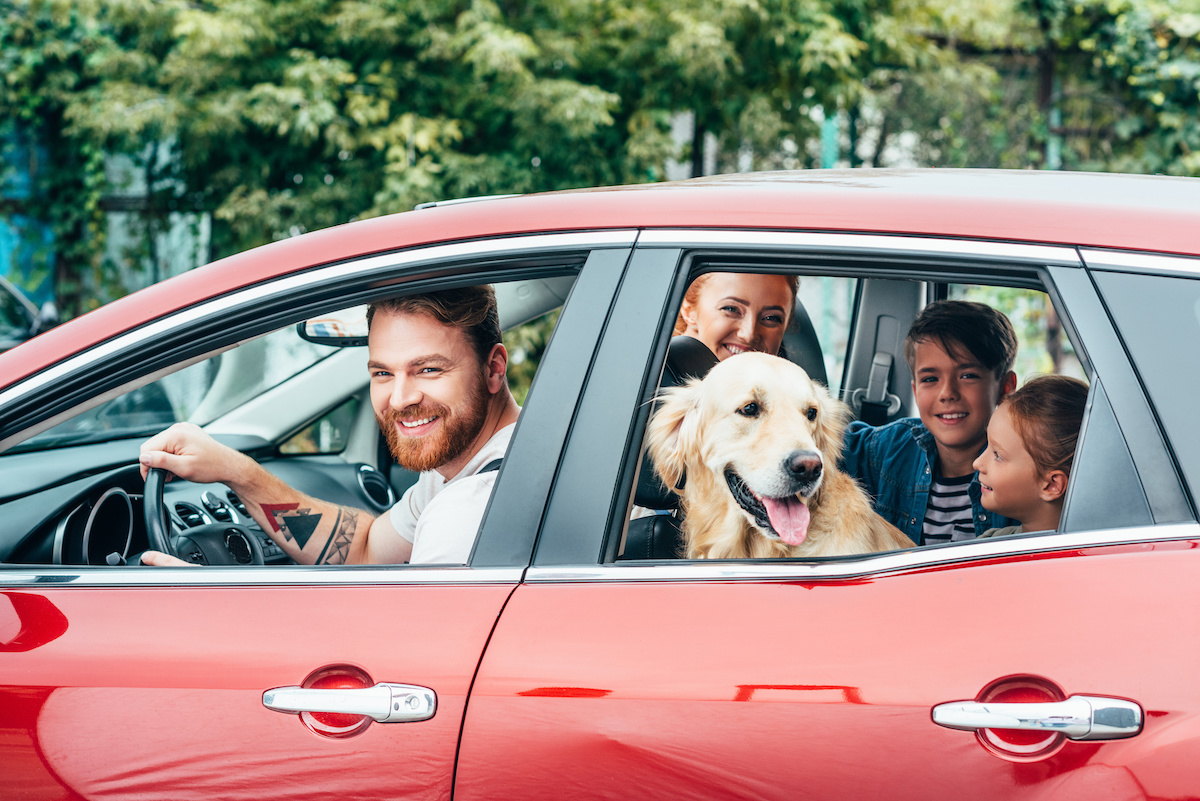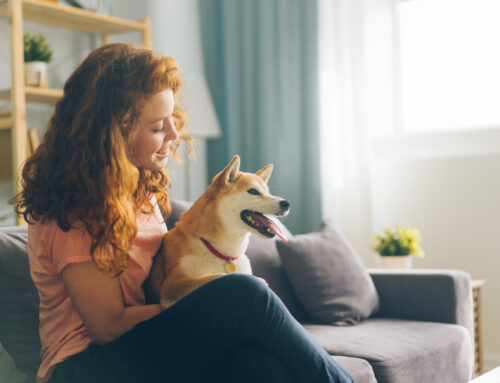The holiday season is a time for joy, celebration, and family gatherings. For many pet owners, including furry family members in holiday travel plans is a must. Whether you’re heading to a relative’s house or embarking on a winter getaway, traveling with pets requires careful planning to ensure a stress-free and enjoyable experience for both you and your beloved animals.
In this blog, we’ll explore essential tips and considerations for traveling with pets during the holidays, brought to you by Animal Care Center, your trusted partner in pet health and wellness.
What to Do Before Traveling with Pets
Take Your Pet in for a Health Check-up with Your Veterinarian
Before hitting the road or taking to the skies, schedule a visit to Animal Care Center for a pre-travel health check-up. Your veterinarian can ensure your pet is up-to-date on vaccinations, provide any necessary preventive medications, and offer advice specific to your pet’s health needs.
Update Vaccinations: Ensure that your pet’s vaccinations, including rabies and any region-specific vaccines, are current. If traveling internationally, check the destination country’s requirements for pet vaccinations and obtain the necessary documentation.
Medication Refills: If your pet is on any medications, make sure you have enough for the entire trip. Consult with your veterinarian to refill prescriptions and discuss any adjustments needed for travel.
Make Sure Your Pets are Wearing Identification and are Microchipped
Collar with ID Tags: Ensure your pet wears a secure collar with updated identification tags. Include your contact information, the destination address, and a phone number where you can be reached during your travels.
Microchip Information: If your pet isn’t already microchipped, consider having this done before traveling. Ensure that the microchip information is up-to-date with your current contact details.
Pack a Pet Travel Kit
Pack a dedicated travel kit for your pet. Include items such as food and water bowls, your pet’s regular food, favorite toys, bedding, and any comfort items that can help create a familiar environment.
You should also prepare a basic first aid kit for your pet, including any necessary medications, bandages, and antiseptic wipes. Consult with your veterinarian on specific items based on your pet’s health needs.

Choosing the Right Mode of Transportation
Car Travel
If your pet is not used to car travel, gradually introduce them to short rides to build positive associations. Use treats, toys, and praise to create a comfortable and positive experience.
It may also be smart to invest in proper restraints such as pet seat belts, car harnesses, or travel crates to ensure your pet’s safety during the journey. Avoid allowing pets to roam freely in the car, as this can be dangerous for both them and the driver.
Air Travel
If flying is part of your travel plans, research airline pet policies well in advance. Different airlines have varying rules and regulations regarding pet travel, including carrier specifications, fees, and health documentation.
If you’re using a pet carrier, acclimate by placing treats, toys, and a familiar blanket inside. Gradually increase the time your pet spends in the carrier to reduce anxiety during the journey.
Accommodations
If your journey involves overnight stays, book accommodations that are pet-friendly. Many hotels, motels, and vacation rentals cater to pet owners and provide amenities such as pet beds, bowls, and designated walking areas.
Be aware of any local regulations or restrictions at your destination regarding pets. Some places may have leash laws, designated pet areas, or restrictions on certain breeds.
Keep Your Pets Comfortable and Safe During Travel
Creating a Comfortable Travel Environment
Bringing along familiar items from home can significantly contribute to your pet’s comfort during travel. Pack your pet’s favorite blanket, a well-loved toy, or an item of your clothing that carries your scent. These familiar scents can provide a sense of security, making the new environment less intimidating for your furry friend.
Additionally, proper ventilation is crucial to ensure your pet’s well-being during travel, especially in confined spaces such as carriers or crates. In a car, ensure that windows are cracked open to allow fresh air circulation. If your pet is in a carrier, choose one with ample ventilation holes or openings. In the case of air travel, adhere to airline regulations regarding carrier ventilation.
Give Regular Breaks and Exercise
Long journeys can be challenging for pets, especially those confined to carriers or crates. Plan for regular pit stops to allow your pet to stretch their legs, relieve themselves, and get some exercise. Research pet-friendly rest areas or parks along your route, providing designated areas for pets to explore safely.
For longer breaks, engage your pet in short exercise sessions. Allow them to walk, play, and expend some energy. This not only helps maintain physical health but also provides mental stimulation, reducing restlessness during the journey. A tired pet is more likely to rest comfortably during travel.
Monitoring Your Pet’s Behavior
Pets may exhibit signs of stress or anxiety during travel. It’s essential to be attentive to their behavior and intervene if necessary. Signs of stress may include excessive panting, whining, pacing, restlessness, or attempts to escape from the carrier. If you notice any of these signs, consider taking a short break to reassure and comfort your pet.
Implement calming techniques to alleviate stress. Gentle petting, soft talking, or playing calming music in the background can have a soothing effect on your pet. Some pet owners also find success using pheromone sprays or collars designed to reduce stress and anxiety in pets.
Use Safe and Secure Restraints
When traveling by car, it’s crucial to secure your pet safely to prevent injury in case of sudden stops or accidents. Utilize pet seat belts, car harnesses, or travel crates designed for your pet’s size and comfort. Avoid allowing pets to roam freely in the car, as this can be dangerous for both them and the driver.
For air travel, strictly adhere to airline guidelines regarding pet carriers. Ensure that the carrier is well-ventilated, secure, and compliant with size and weight restrictions. Familiarize your pet with the carrier before the journey, making it a comfortable and secure space.
Have Adequate Food and Water on Hand
Maintain your pet’s regular feeding schedule during travel. Sudden changes in diet can lead to digestive upset, so stick to the same food and feeding routine as much as possible. Pack enough food for the entire journey, plus a little extra in case of delays.
Make sure your pets also have access to clean water throughout the journey. Carry a portable water bowl and offer water during breaks to ensure your pet stays adequately hydrated. Dehydration can contribute to stress and discomfort, so monitor your pet’s water intake.
Handling Special Considerations for Your Pets
Traveling with Senior Pets
For senior pets, consider a thorough health check-up before travel. Discuss any concerns or accommodations needed with your veterinarian.
Provide extra comfort for senior pets during travel, such as additional padding in carriers or bedding to alleviate joint discomfort.
Traveling with Puppies and Kittens
Puppies and kittens may be more energetic and curious. Use secure carriers or harnesses to prevent them from wandering during travel.
Bring familiar items, such as a favorite toy or blanket, to provide comfort and reassurance to young pets.
Handling Emergencies and Unexpected Situations
Veterinary Emergency Preparedness
Identify emergency veterinary clinics along your travel route and at your destination. Keep their contact information readily available in case of unexpected health concerns.
You should also bring a copy of your pet’s medical records, including vaccination history, any pre-existing conditions, and emergency contact information for your regular veterinarian.
Identification and Contact Information
Ensure that your pet’s ID tags are up-to-date with your current contact information, including your mobile phone number.
In the unfortunate event that your pet becomes lost, a microchip with current information can significantly increase the chances of a safe reunion.

Post-Travel Health and Wellness
Unpacking and Settling In
Upon reaching your destination, give your pet some time to acclimate to the new environment. Allow them to explore gradually and provide a quiet space for relaxation.
Stick to your pet’s regular feeding schedule and ensure access to clean water. Changes in routine can be stressful, so consistency is key.
Follow-up Veterinary Check-up
Keep a close eye on your pet’s behavior, appetite, and overall well-being. Any noticeable changes should be discussed with your veterinarian.
Consider scheduling a post-travel veterinary check-up to address any health concerns and ensure your pet’s continued well-being.
Make Traveling with Pets a Breeze with These Tips!
Traveling with pets during the holidays can be a rewarding experience when approached with careful planning and consideration for your furry companion’s well-being. By following the tips and guidelines outlined in this blog, provided by Animal Care Center, you can embark on a stress-free adventure with your pets, creating cherished memories and celebrating the holidays together as a complete family.
Remember, the dedicated team at Animal Care Center is here to support you with expert veterinary care and guidance, ensuring your pet’s health and happiness throughout the holiday season and beyond. Safe travels!






